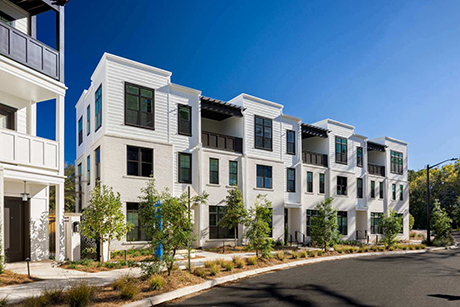Having completed the first full school year without a major interruption to the traditional classroom setting since March 2020, student housing operators are preparing for a leasing season without COVID-19 uncertainty taking center stage. Given that multifamily technology platform RealPage pegged average U.S. occupancy at a record high of 94.1 percent in the fall of 2021, repeating that performance would signal a continuing strong recovery for the sector.

Joe Goodwin,
Asset Living
Joe Goodwin, senior vice president of strategic analytics and research with Asset Living, anticipates that this fall’s occupancy rate will rival last year’s record. The Houston-based property management firm, which Student Housing Business ranked as the No. 1 property manager in 2021 with close to 135,000 beds, tracks roughly 175 student housing markets on a weekly basis and an additional 30 or so monthly.
“We see very consistent data this year showing that occupancies in the fall of 2022 are going to be strong,” Goodwin states. “In our own portfolio, we’re already about seven percentage points ahead of fall 2021 leasing velocity.”
Back to Fundamentals

Kevin Gregory,
Asset Living
Now that the pandemic is in the rearview mirror, supply and demand have become the primary influence on occupancy rates. In turn, variables like enrollment trends, on-campus living requirements, the pipeline of new beds, and university dorm beds help determine which university markets are improving and which ones are still struggling to recover from the pandemic. Kevin Gregory, director of market research at Asset Living, specializes in building highly detailed market analysis reports that include all these elements broken out with key trends and insights gleaned to help clients make informed decisions.
“Strategic decision-making should always be backed by data. Understanding what data to leverage is critical in determining a proper outcome,” says Gregory. “Getting the supply/demand analysis done correctly helps make informed decisions and helps to break through the noise when it might seem logical to jump to a popular conclusion or trend. Alternatively, getting the wrong data could have dire consequences to the performance of a new asset entering the market.”
Generally speaking, Goodwin says, markets with flagship universities that boast an enrollment of around 40,000 to 50,000 or more have recovered more quickly than smaller colleges that have an enrollment of 15,000 students or fewer. In particular, a school of 10,000 students that requires freshmen to live on campus removes roughly one-fourth of the demand for student housing. Operators in those markets must pay especially close attention to new supply and the capture ratio, which determines how much traffic each property will need to in order to reach full occupancy, he adds.
“Anytime you have an increase of beds in one of these small markets, it can throw a wrench into the market performance,” Goodwin says. “If you add 500 beds to a market of 2,000 beds, that’s going to increase supply by 25 percent. That’s a lot for a small market to absorb, especially compared to a university with an enrollment of 50,000 with an off-campus bed count in the 15,000 range.”
In some cases, investors clamoring for multifamily properties are helping smaller markets recover from the COVID slump by buying up student housing properties and converting them into conventional apartments, thereby reducing excess supply. Typically, these are older assets: Some don’t have the bed-to-bath parity that students prefer today, Goodwin explains, and others are returning to the multifamily sector after having been converted into student housing some years ago.
On-Site Team Value
Regardless of the market, student housing property managers have largely accelerated operational initiatives as a consequence of COVID-19 to offer more technology-driven management solutions to residents and prospects. Those efforts include centralizing collections and other routine tasks. Still, the ability of property management teams to create a memorable customer experience for residents is critical to an asset’s success and performance, Goodwin says. For example, some Asset Living on-site teams now have more time to modernize policies and procedures, customize move-in experiences and increase resident communications — all of which affect resident satisfaction.
At the same time, retaining these workers has become more important than ever, considering the tight labor market, he notes. But on-site leasing demands leading up to each fall semester as well as the grind of day-to-day management are often underappreciated. That’s generally due to the emphasis placed on moving from a property-level position to a regional position, he adds
“I think if the industry treated that position with the same reverence it shows regional supervisors, it would go a long way in helping to keep the teams on-site with more consistency,” Goodwin declares. “If you don’t have a good team on-site, it doesn’t matter how good your regional team is.”
Gauging the Future
When looking forward to occupancy in the future, student housing developers and operators are beginning to factor in decreasing enrollment considering the declining number of high school seniors.
Over the last two years, fall enrollment has dropped 6.6 percent compared to 2019, according to the National Student Clearinghouse Research Center, a nonprofit provider of educational data. Additionally, forecasts call for enrollment to fall throughout much of the country through 2029 as high school senior numbers begin to decline significantly in 2025, according to the Higher Education Demand Index.
According to Berkadia, more than 61,000 beds were under construction in early 2022 and 20,544 more were scheduled to begin construction by year end. Asset Living’s data shows developers are gravitating toward larger university markets that are perceived to be less risky, Goodwin says.
“If you were to talk to any developer who has been through a downturn in a small market, they understand that those markets take longer to recover when something happens,” he adds. “So many would rather develop in some of these larger markets because they feel a little safer.”
Developers may have to shift strategies, as well. Prior to the pandemic, shared bedrooms were predominant on the coasts, where space is limited. Typically, these projects were perceived as an economical way to attract a larger pool of tenants, and in more recent times, developers began to add such assets at schools across the Sun Belt, he says.
“Post-pandemic, this type of housing isn’t as popular as it used to be,” Goodwin says, “especially in markets where there isn’t a large contingent of that type of floor plan.”
— By Joe Gose. This article was written in conjunction with Asset Living, a content partner of Student Housing Business.
To learn more about Asset Living, click here.
For more information on becoming a Student Housing Business content partner, contact Rich Kelley, publisher, or Tim Tolton, media advisor.


